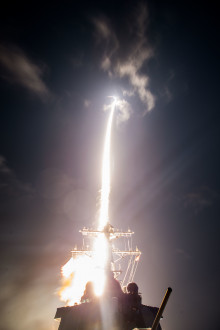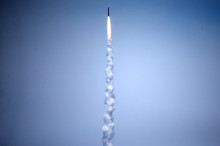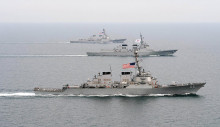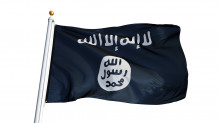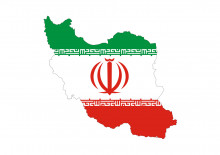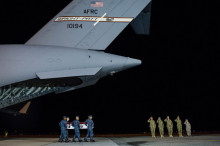Earlier this spring, I posted a blog that talked about our new national security paradigm, focused specifically on the “4+1 construct,” revealed by then Secretary of Defense Ashton Carter at the Reagan National Defense Forum in November 2015. This new way of looking at threats to our nation focuses on “four contingencies and one condition.” The Islamic State (ISIL) is the “condition.”
There are longstanding challenges that the Islamic State pose to the West, among them:
- Dedicated to establishing a caliphate across the Middle East and North Africa
- Unlike other terrorist groups, takes and holds territory
- Intent on conducting attacks in the West as well as Middle East and North Africa
- Demonstrated ability to reappear after territory is taken
But It’s fair to ask, since the “4+1 construct” was posited a year-and-a-half ago, have things gotten better or worse vis-à-vis our ability to contain the Islamic State? I fell it’s worse, because:
- Coalition fissures hamper coordinated military action against ISIL
- Demonstrated willingness to hold civilian population hostage
- Losing territory in Iraq and Syria has not ended violent extremism
- More troops are being requested for both Iraq and Afghanistan
- ISIL continues to hold on to portions of Mosul, Iraq
- Difficulty marshaling coalition support to oust ISIL from Raqqa, Iraq
- Mastered the use of social media for propaganda and recruiting
When we came up with the high-concept for our third Tom Clancy Op-Center novel (Tom Clancy’s Op-Center: Scorched Earth), some thought ISIL would be long-gone by the time the book was published in mid-2016. That hasn’t been the case. Here is part of what we said in our Author’s Introduction:
Few would argue against the statement that ISIS (or ISIL—the preferred term used by U.S. national security officials—the “L” standing for Levant,) presents a profound threat to the West. As President Obama said in a widely-watched speech in September 2014, “Our objective is clear: We will degrade, and ultimately destroy, ISIL through a comprehensive and sustained counterterrorism strategy.”
Almost two years later, U.S. national security officials remain perplexed as to how to deal with ISIS. No one is talking today, in 2017, about defeating ISIS, only containing them. What is happening in the greater Mideast in areas where ISIS roams freely will not resolve itself in the next several years. For Western nations, and especially for the United States, today’s headlines are looming as tomorrow’s nightmare.
ISIS will remain a threat to the West—and especially to the United States—years into the future because America has not come to grips with how to deal with this threat. As Jessica Stern and J.M. Berger describe in their best-selling book, ISIS: The State of Terror, and as Michael Weiss and Hassan Hassan describe in their best-seller ISIS: Inside the Army of Terror, the very nature of ISIS makes attempts to deal with it by employing the conventional instruments of national power all-but futile. Here is how Michiko Kakutani framed the challenge ISIS presents in his Books of the Times review of these two books:
The Islamic State and its atrocities—beheadings, mass executions, the enslavement of women and children, and the destruction of cultural antiquities—are in the headlines every day now. The terror group not only continues to roll through the Middle East, expanding from Iraq and Syria into Libya and Yemen, but has also gained dangerous new affiliates in Egypt and Nigeria and continues to recruit foreign fighters through its sophisticated use of social media. Given the ascendance of the Islamic State (also known as ISIS or ISIL), it’s startling to recall that in January 2014, President Obama referred to it as a “J.V. team,” suggesting that it did not pose anywhere near the sort of threat that Al Qaeda did.
Life imitates art, and these are worrisome signs. Stay tuned to this blog over the next several weeks to learn more about other threats to our national security.
